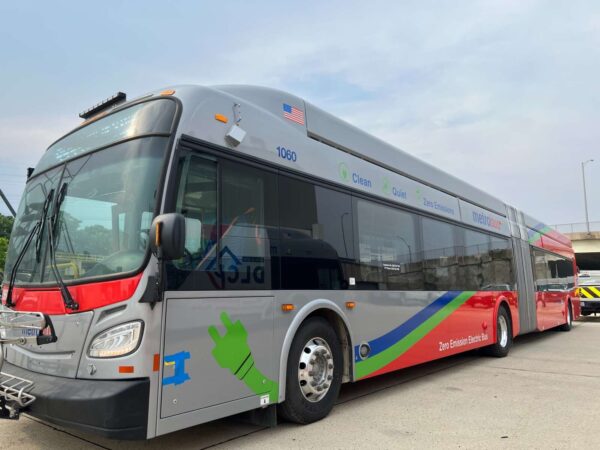
Metro’s bus facility in Franconia is a step closer to going electric, thanks to a big infusion of funding from the federal government.
The Federal Transit Administration has awarded Metro a $104 million grant to convert its Cinder Bed Road Bus Division garage at 7901 Cinder Bed Road into a fully electric facility, the Washington Metropolitan Area Transit Authority announced Monday (June 26).
In addition to supporting new charging infrastructure, the funds will enable Metro to buy about 100 battery-powered buses and develop a training program for drivers, mechanics and first responders, according to Sens. Mark Warner and Tim Kaine, who lauded the grant in a joint statement.
“We appreciate the Federal Transit Administration’s leadership in the transition to zero-emission bus technology that will help reduce air pollution and improve quality of life across the region,” WMATA Board Chair Paul Smedberg said, thanking the senators and other federal, state and local elected officials for helping secure the money.
Metro’s board of directors adopted a plan in 2021 directing the transit agency to purchase only buses that don’t produce carbon emissions by 2030 and fully transition to a zero-emission bus fleet by 2045.
Metro’s first electric bus arrived this month as part of an initial 12-vehicle batch that will operate out of the Shepherd Parkway garage in D.C., according to WMATA. The vehicles were expected earlier, but the delivery got delayed after a fire in Connecticut last summer forced the manufacturer New Flyer to recall hundreds of buses.
Located northeast of the I-95 and Fairfax County Parkway interchange, the Cinder Bed Road garage houses 121 40-foot buses that serve 11 routes, as of December 2021. It has parking for 160 vehicles and 13 maintenance bays.
According to Metro’s transition plan, the facility could host 112 battery-powered electric buses. It has “safe and efficient site circulation,” but a stacked bus parking layout and existing underground infrastructure for utilities and stormwater pose hurdles.
To fully cover the cost of converting the Cinder Bed garage, the federal grant will be matched by “a combination of local funding,” a Metro spokesperson said.
Fairfax County plans to use the facility for its future Richmond Highway bus rapid transit service. Branded as The One, the system will operate all-electric buses from Fort Belvoir to the Huntington Metro station, potentially beginning in 2030.
“Thanks to our partnership with the Washington Metropolitan Area Transit Authority and federal support, we will soon deliver a fully converted battery-electric bus facility in Fairfax County,” Fairfax County Board of Supervisors Chairman Jeff McKay said. “This project aligns with the county’s important goal of carbon neutral government operations by 2040 and is an investment in the region’s transit system and clean energy that will bring significant environmental and community benefits.”
The conversion design process is slated to begin later this year, with a projected opening coming in 2027-2028, according to WMATA’s transition plan. Read More
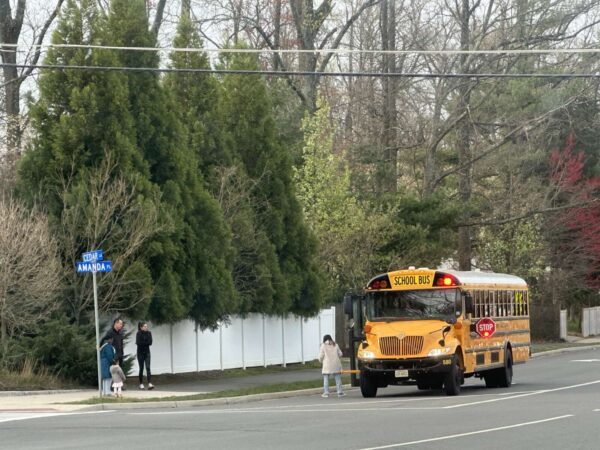
A long-delayed effort to outfit Fairfax County Public Schools’ buses with cameras has officially received the green light from the Fairfax County Board of Supervisors.
At a meeting yesterday (Tuesday), the board unanimously approved an agreement allowing the Fairfax County Police Department to participate in a program that will install 50 bus camera systems to detect drivers who don’t stop when buses are boarding and off-loading students.
Board members emphasized the need for the program amid surging pedestrian fatalities and concerns about student and traffic safety.
Board of Supervisors Chairman Jeff McKay said he was extremely dismayed about delays associated with the program.
“This is a long time coming, frankly. It will save lives and equally importantly make the very tough job of our school bus operators a little bit easier with maybe one less thing they have to worry about,” he said.
The project is not expected to go live until 2024.
Failure to stop when a school bus unloads and loads students is prohibited by state law, resulting in a civil fine of $250 for violations. The state passed enabling legislation allowing schools to install video-monitoring systems in 2011.
FCPS staff began exploring the idea of adding cameras to its buses in 2013, prompted by Dranesville District Supervisor John Foust, but the Board of Supervisors turned up the heat in February when it approved a motion asking FCPS why a program had not yet been implemented.
Factors in the delay included a need for more state legislation to clarify legal questions regarding the authority of police departments to mail summons to violators and permitting vendors to access Department of Motor Vehicles data.
Talks with a vendor were on hold during the pandemic and when the contact for the vendor left in 2021, the future of the project was unclear. McKay then sent a letter in December 2021 proposing that the program be in place by last summer.
McKay, Foust and others said they had hoped for a more expeditious handling of the proposal.
“It was the legal issues that cost us all the times which is really frustrating because there were different interpretations [of the law],” McKay said.
Virginia school systems with bus stop-arm cameras include Falls Church City, Arlington and Newport News.
FCPS will bear the cost of the program by vendor American Traffic Solutions, Inc.
Drivers of vehicles identified by the bus camera system will receive a summons that requires payment.
The program will expand based on an evaluation of the administrative process and the effectiveness of the traffic calming technology by FCPS and the FCPD.
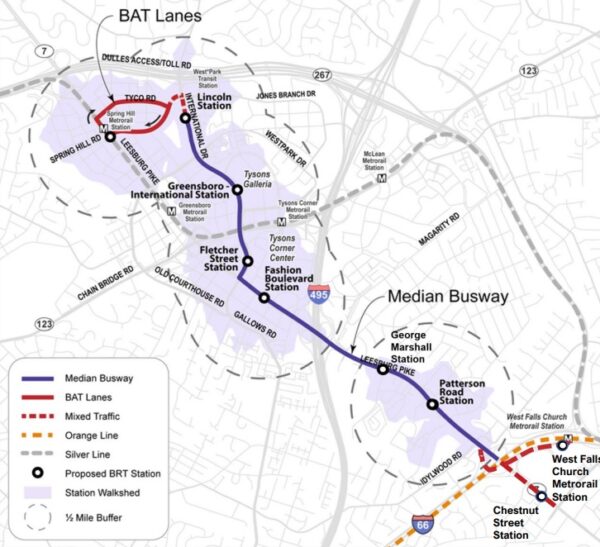
Fairfax County’s plan for bus rapid transit (BRT) service on Route 7 in Tysons sailed through the planning commission last week.
The commissioners recommended on Wednesday (June 21) that the Fairfax County Board of Supervisors approve a comprehensive plan amendment establishing guidelines for the future public transportation system, including the route and station locations.
If the amendment is approved at the board’s scheduled public hearing on July 25, the project will become eligible for funding through the county’s Transportation Priorities Plan and state and regional grants, Fairfax County Department of Transportation senior planner Sean Schweitzer told the planning commission.
“This is for future planning. This is not an immediately funded initiative. It’s also very timely,” Planning Commission Vice Chairman Timothy Sargeant noted, referencing FCDOT’s collaboration with the Northern Virginia Transportation Commission on a larger study that could eventually extend the Route 7 BRT to Alexandria.
Known as Envision Route 7, that study has been underway since 2013 and shifted its focus last fall to a portion of the system that will run through Falls Church City down to Seven Corners.
Because the Tysons section is at a more advanced stage of planning, with an overall route alignment in place since 2021, Fairfax County hopes to initially implement service within Tysons down to the West Falls Church Metro station as a temporary southern terminus.
As shared with the planning commission at a committee meeting on May 11 and with the public at virtual community meetings on June 7 and 8, the Route 7 BRT will serve nine stops in the Tysons area:
- West Falls Church Metro
- Route 7 (Leesburg Pike) at Chestnut Street
- Patterson Road, near the Tysons Station and Idylwood Plaza shopping centers
- George C. Marshall Drive
- Fashion Blvd, serving Tysons Corner Center
- International Drive and Fletcher Street
- International and Greensboro Drive, next to Tysons Galleria
- International and Lincoln Circle
- Spring Hill Metro station
To give the buses a clear path, since BRT is intended to be faster than a regular local bus service, the county has proposed designating two future lanes on Route 7 (Leesburg Pike) as BRT-exclusive lanes. The service will also repurpose two existing lanes on International Drive to Lincoln Circle.
The buses will occasionally enter mixed traffic at the West Falls Church station and when turning left from International Drive onto Spring Hill Road, where they will use Business Access and Transit (BAT) lanes to reach the Metro station.
“We know that the middle of Tysons doesn’t really have too much in the way of transit options,” Schweitzer said. “So, this preferred alignment helps to kind of expand the overall transit network within Tysons and gives people…different modes to use in order to get around Tysons and, ultimately, in the future, to Alexandria.”
FCDOT staff is studying how to incorporate improvements for bicyclists and pedestrians into the project, Schweitzer told the commission. Also to be determined is whether the BRT will keep stopping at the West Falls Church Metro station or stay on Route 7 after service is extended into Falls Church.
Franconia District Commissioner Dan Lagana suggested the county could learn from the existing BRT systems in Arlington and Alexandria when designing bicycle and pedestrian facilities, such as wider or raised crosswalks.
“I use and drive by, for example, the Metroway in Alexandria frequently, and…the city has done an outstanding job, Arlington and Alexandria,” Lagana said. “But there are some clear gaps now that we’ve seen it in action and we know crosswalks in the area are insufficient.”
Schweitzer said the county has been collaborating with its neighbors in Arlington, Alexandria and Falls Church, including through the Envision Route 7 study.
“We’re making sure all our transit projects and studies are kind of lining up so it can create, in the future, an expansive BRT system and also connect to the West End Metroway as well in Alexandria,” he said.
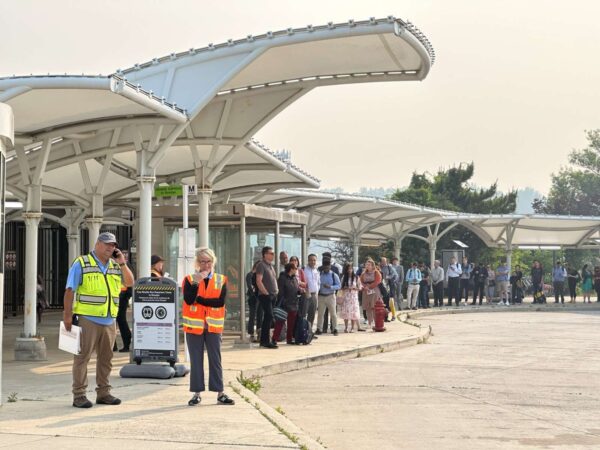
Some good news is on the horizon for local Metrorail riders: the West and East Falls Church stations are set to reopen on Monday (June 26) after a 23-day closure.
The bad news? The Vienna and Dunn Loring stations will remain closed through July 16.
Orange and Silver line service at the four stations ceased on June 3 so Metro crews could replace a 40-year-old steel rail. The transit agency is also using the closures to install fiber optic cables and clear vegetation along or near the train tracks.
After laying down nearly 1,800 tons of rail and removing “more than 42,000 linear feet of trees, bushes, grasses, and invasive vines,” the Washington Metropolitan Area Transit Authority says it will advance to the project’s second phase next week.
“Our team has made great progress on this work so far. As of last week, our team has replaced 15.5 miles of track, installed nearly 36 miles of fiber-optic cable, replaced two diamond interlockings, and installed 13 new switch machines,” Metro Chief of Infrastructure Andy Off said. “They are working to keep the system safe and reliable, and we thank our customers and visitors to the area for their understanding and patience.”
The extended shutdown has been a source of frustration for many commuters in Northern Virginia, despite Metro’s efforts to minimize disruptions by providing free shuttles.
After getting reports of long lines and wait times for the shuttles, particularly at the Vienna and Ballston stations, WMATA said on June 7 that it would add more buses, coordinate with police to ensure free movement through traffic and reevaluate routes through the more congested areas of Rosslyn.
However, the transit agency noted that wait times could still reach 20 minutes during peak rush hours “based on the volume of customers at these stations.”
Some waiting should still be expected at the Vienna, Dunn Loring and West Falls Church stations going forward, Metro says, advising riders “to allow extra time for their travel,” especially during rush hour.
From June 26 through July 16, free shuttles will be provided with stops at those three stations, arriving every 10 to 20 minutes. There will also be an Orange Line Express with service between Vienna and West Falls Church every eight to 15 minutes on weekdays.
Standard buses from Metro and other transit services, including Fairfax Connector, will be available as well: Read More
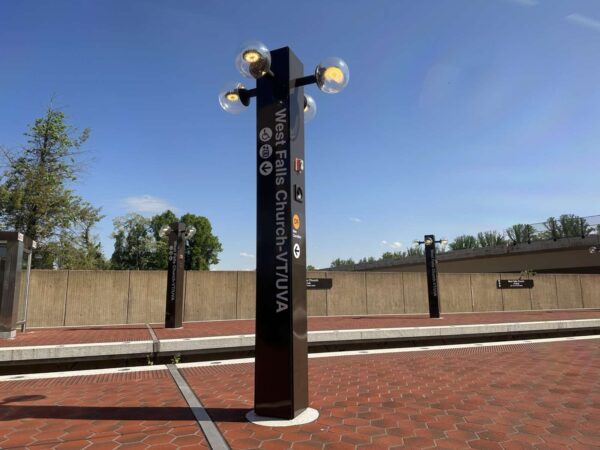
The last train out of the Vienna Metro station for the next month will depart at 12:20 a.m. tomorrow (Saturday).
After that, the Vienna, Dunn Loring, West Falls Church and East Falls Church stations will all shut down, as the Washington Metropolitan Area Transit Authority begins to replace a 40-year-old steel rail extending to Ballston.
All four stations will be closed through June 25. At that point, the Falls Church stations will reopen, but the Vienna and Dunn Loring stations will stay closed through July 16.
“Replacing some of the oldest tracks in our system is critical to safety and reliability, and crews will work 24/7 to complete this project as quickly as possible so we can get back to normal service,” Metro Chief of Infrastructure Andy Off said in a news release earlier this week. “We make every effort to minimize impacts to our customers, and we thank them for their patience while we continue to build a safe and modern Metro to serve the entire region.”
In addition to the rail replacement, the maintenance project will include upgrades of fiber-optic cables at the stations “to modernize communications and allow for more efficient maintenance in the future,” WMATA says.
Though the shutdown will primarily affect Orange Line travelers, the East Falls Church station in Arlington will also be closed to Silver Line trains, so anyone looking to transfer or travel between the McLean and Ballston stations will need to take one of the free shuttles provided by Metro.
The shuttle schedule during the shutdown’s current phase to June 25 is below:
Orange Line Shuttle: Local service between Vienna, Dunn Loring, West Falls Church, East Falls Church, and Ballston-MU stations during normal Metrorail operating hours.
- Every 5 minutes during rush hours. (6-9 a.m., 3-7 p.m.)
- Every 10 minutes all other times, including weekends.
Silver Line Shuttle: Local service between McLean, East Falls Church, and Ballston-MU stations during normal Metrorail operating hours.
- Every 5 minutes during rush hours. (6- 9 a.m., 3-7 p.m.)
- Every 10 minutes all other times, including weekends.
Orange Line Express: Express service between Vienna and Rosslyn stations.
- Service every 5 minutes during rush hours. (6-9 a.m., 3-7 p.m.)
- Service every 10 minutes during non-rush hours. (9 a.m.-3 p.m., 7-9 p.m.)
Silver Line Limited: Limited-stop service between Washington Dulles International Airport, McLean, and Rosslyn.
- Service every 5 minutes during rush hours. (6-9 a.m., 3-7 p.m.)
- Service every 10 minutes during non-rush hours. (9 a.m.-3 p.m., 7-9 p.m.)
The Silver Line Limited shuttle will be the fastest option for riders going to or from Dulles Airport, which accounts for about one-third of all trips on Metro’s Silver Line extension, according to WMATA.

Plans for a Route 7 bus rapid transit (BRT) system in Tysons are starting to take more concrete shape, outpacing an ongoing study of the corridor further to the south.
The service will initially launch in Tysons, operating between the Spring Hill and West Falls Church Metro stations, before later expanding into Falls Church and Alexandria, Fairfax County Department of Transportation staff told planning commission members at a May 11 committee meeting.
“Since the northern portion is kind of on a fast track, we would make this the first phase to see how it works,” Sean Schweitzer, a senior transportation planner for FCDOT, said. “It would work in the interim as a closed system until the rest can catch up.”
During the interim phase, the BRT will have nine stops, according to a comprehensive plan amendment proposed by county staff:
- The West Falls Church Metro station
- Westbound Route 7 (Leesburg Pike) at Chestnut Street
- Patterson Road, near the Tysons Station and Idylwood Plaza shopping cneters
- George C. Marshall Drive
- Fashion Blvd, serving Tysons Corner Center
- International Drive and Fletcher Street
- International and Greensboro Drive, next to Tysons Galleria
- International and Lincoln Circle
- Spring Hill Metro station
In the future, the Fletcher Street station could serve as a transfer point for an “enhanced” Gallows Road transit system, Schweitzer said. A study of that corridor down to Annandale is only just gearing up.
The route follows the preferred alignment along International Drive that the Fairfax County Board of Supervisors approved in 2021. The West Falls Church Metro was chosen as an interim southern terminus so buses can turn around, but the county hasn’t ruled out the possibility of making it a permanent station.
“If [the BRT is] better served by going directly to the Metro station, where it can pick up more passengers versus staying on Route 7, we could make that adjustment and have that be the ultimate alignment,” Fairfax County Transportation Planning Chief Mike Garcia said.
Except for the Metro stations, each stop will have separate platforms for east and westbound travel, staggered to reduce right-of-way needs, according to county staff.
The buses will mostly utilize dedicated median lanes, but they have to join other traffic at the Metro stations and to make the left turn from International Drive to Spring Hill Road. Spring Hill and Tyco roads will have “Business Access and Transit” (BAT) lanes limited to buses and drivers turning into the commercial area east of the Spring Hill Metro station. Read More
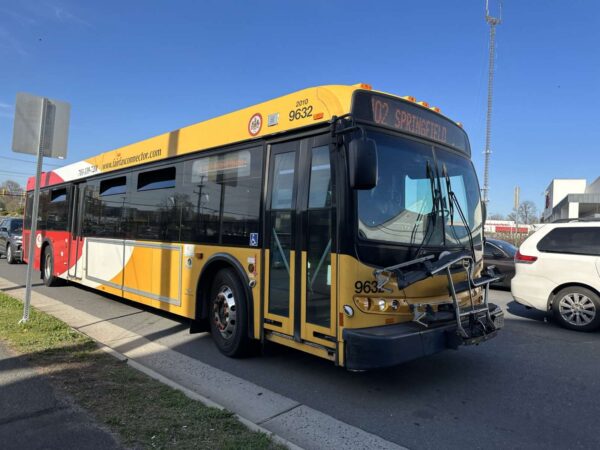
Fairfax Connector is shaking up its service along the I-66 corridor in anticipation of two major parking facilities finishing construction later this year.
The Fairfax County Department of Transportation has proposed adding or revising almost 30 routes in Tysons, Vienna, Springfield, Chantilly and Centreville, as it seeks to incorporate the upcoming Springfield and Monument Drive garages into its bus system.
According to FCDOT, the changes will improve travel throughout the D.C. region, with the Monument Commuter Parking Garage and Transit Center in particular supporting new connections between the eastern and western sides of the county.
“By creating a transfer point at the new Monument Park-and-Ride facility, riders will have the opportunity to transfer between local routes, access regional routes, and connect to the Vienna Metrorail Station, Franconia Metrorail Station, Tysons, or…D.C.,” FCDOT said in a news release.
Shaped by two previous rounds of public engagement, the proposed service plan will be presented today (Monday) at a 7 p.m. community meeting in the Franconia Government Center (6121 Franconia Road). Virtual meetings are also scheduled for 7 p.m. tomorrow (Tuesday) and Thursday (May 25).
The public can also provide input through an online survey until June 5.
Monument Drive
The $43 million Monument facility will boast 820 parking spaces, eight bus bays, a pick-up and drop-off area, and bicycle racks and storage. Located at the Government Center Parkway intersection next to Fairfax Corner, it broke ground in November 2021 as part of the I-66 widening.
FCDOT has proposed adding the facility as a stop on Route 660, a cross-county connector from the Stone Road Park & Ride in Centreville to the Tysons Metro station that launched in February.
Other notable changes involving the Monument facility include:
- Route 605: Reston Town Center Metro station to Fair Oaks Mall
- Route 622: Fairfax Towne Center circulator with more local links and new weekend service
- Route 625: New route to Random Hills Road and Pender Drive
- Route 651: New seven-day service to the Westfields, Chantilly, and Fair Ridge areas
- Route 663: Stringfellow Road Park and Ride to the Vienna Metro station
- Route 670: New peak express service between Chantilly and the Franconia-Springfield
Metro station - Route 671: New peak service from Chantilly to the Dunn Loring Metro station
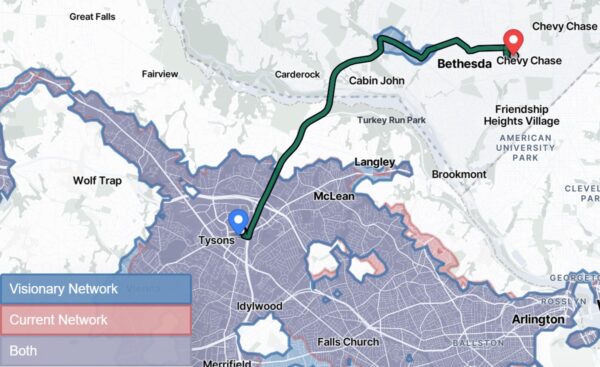
Local transportation officials are dreaming of a better future for Metrobus, including a 24-hour route connecting Tysons and Bethesda.
That route and others are part of Metro’s draft “Visionary Network,” an aspirational redesign of the 50-year-old bus network that will not be implemented — at least in full.
“It’s kind of setting the table large and saying what the opportunities are, and then constraining it,” said Allison Davis, vice president of planning at the Washington Metropolitan Area Transit Authority, at the Fairfax County Board of Supervisors transportation committee meeting Tuesday (May 16).
Other highlights for Fairfax County in the visionary plan include an extension of the 38B bus route to Seven Corners. Currently, the bus runs from Ballston to Farragut Square. There could also be added connections to George Mason University, a new hub for Inova Alexandria Hospital, and busing at Dulles International Airport when train service isn’t running.
At the meeting, both Davis and Peter Cafiero, managing director of intermodal planning at WMATA, highlighted interest in the Tysons-Bethesda route, which could be enabled by the Capital Beltway widening that’s now under construction.
“We’ve had a ton of comments about that Bethesda-to-Tysons connection that I think a lot of people are really keen to see,” Davis said.
After collecting feedback on the visionary network through this spring, WMATA will put together two network designs this fall. One will be a short-term network that’s immediately usable, while the other will be a revised version of the visionary network.
Changes could begin in 2024 if Metro’s board of directors approves the recommended short-term network in December.
WMATA is collaborating on the project with the Fairfax County Department of Transportation, which manages the Fairfax Connector bus system.
“We have been working with our partners at WMATA since the beginning of the process,” said Michael Felschow, planning section chief in the transit services division of FCDOT. “Our focus is to make sure our plans coordinate well with their plans.”
That coordination will involve making sure there are no gaps or duplications in service and helping to define service levels for prioritized routes, including on corridors such as Route 50, Braddock Road, Columbia Pike and Little River Turnpike.
“Our system doesn’t really provide a lot of service in these corridors, but we want to make sure we’re linking to these corridors at key terminals,” Felschow said.
Even as county staff works with WMATA, the county’s Transit Strategic Plan should remain “the driver” for FCDOT’s decision-making, Board of Supervisors Chairman Jeff McKay said. Cost efficiency should also be a “huge driver” in determining who operates different bus routes.
“I do think the vision of where these routes are and how we can make sure there’s no gaps in service and other things is absolutely an essential thing to do,” McKay said.
As currently outlined, the visionary network would require a 35% increase in funding for Metrobus. WMATA’s proposed budget for fiscal year 2024 allocates $742.9 million to Metrobus, a slight decrease from the $743.9 million budgeted in FY 2023.
The public comment period for the draft visionary network runs until June 5. Community members can weigh in on the network redesign ideas online and at pop-up events. The visionary network is part of the broader Better Bus initiative.
Map via WMATA
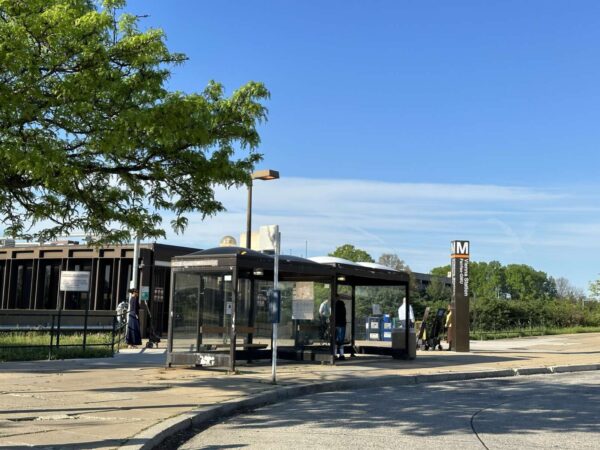
Metro will assemble an armada of shuttles this summer to support travelers during its multi-week shutdowns of several stations on the Orange, Silver and Green lines.
The Washington Metropolitan Area Transit Authority (WMATA) announced yesterday that free shuttle buses will be available throughout the closures, which will begin on May 12 and roll out to Fairfax County’s Orange Line stations starting June 3.
During the closures, the agency will conduct maintenance work at each of the stations and modernize their facilities.
“Continued maintenance work is essential to safe and reliable rail service,” WMATA Chief of Infrastructure Andy Off said in the press release. “We are working strategically to target maintenance locations and minimize the impacts on customers as we conduct this critical work to upgrade systems, improve reliability, and modernize station facilities.”
In Fairfax County, the closures will take place in two phases.
First, the Vienna, Dunn Loring, West Falls Church and East Falls Church stations will close from June 3 to 25 so that Metro can replace the 40-year-old train rails and add fiber-optic cables.
“Replacing the track in this section is a top priority to ensure safety and increase reliability,” WMATA said.
A combination of local, express and limited-stop shuttle service will be offered:
Orange Line Shuttle: Local service between Vienna, Dunn Loring, West Falls Church, East Falls Church, and Ballston-MU stations.
- Local service between McLean, East Falls Church, and Ballston-MU stations.
- Every 5 minutes during rush hours. (6- 9 a.m., 3-7 p.m.)
Orange Line Express: Express service between Vienna and Rosslyn stations.
- Service every 5 minutes during rush hours. (6-9 a.m., 3-7 p.m.)
- Service every 10 minutes during non-rush hours. (9 a.m.-3 p.m., 7-9 p.m.)
Silver Line Limited: Limited-stop service between Washington Dulles International Airport, McLean, and Rosslyn.
- Service every 5 minutes during rush hours. (6-9 a.m., 3-7 p.m.)
- Service every 10 minutes during non-rush hours. (9 a.m.-3 p.m., 7-9 p.m.)
Silver Line riders will need to take a shuttle to bypass the East Falls Church transfer station. Trains between Ashburn and McLean will run every eight minutes, except after 9:30 p.m., when they will operate every 10 minutes.
Both of the Falls Church stations will reopen on June 26, but the Vienna and Dunn Loring stations will stay closed through July 16 to finish the rail replacement and cable installation.
Free local shuttle service will be provided betwen the Vienna, Dunn Loring and West Falls Church stations, operating every 5 to 10 minutes on weekdays and every 10 minutes on weekends while Metrorail is open.
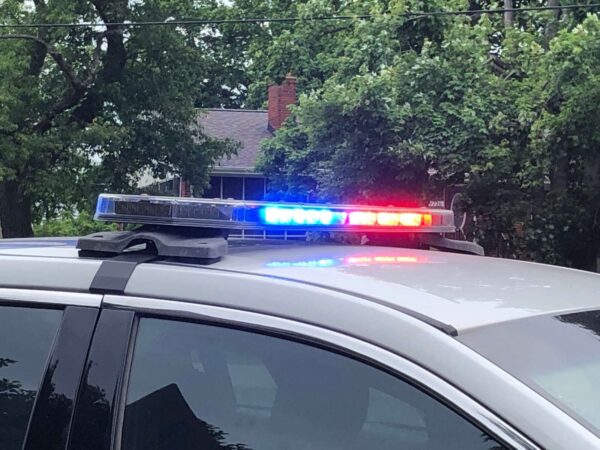
(Updated at 8 p.m.) A white bus with a blue strip attempted to pick up children at a bus stop in the Southington Lane area of Reston earlier this morning (Thursday).
Local police are investigating the incident, which happened around 7:44 a.m.
The driver reportedly drove off after a community member tried to speak with the driver. The driver, who is described as a white male with facial hair, shut the door and drove off.
A second incident happened about 10 minutes later involving a different bus. An unmarked yellow school bus with black stripes tried to pick up elementary school students at a bus stop in the area of Chynoweth Street and Telegraph Road in Lorton, Fairfax County police said.
That driver also drove away when confronted by a community member. He was described as a man with long curly brown hair who wore a surgical mask and dark clothing.
Police said later that the Lorton driver was identified.
“The bus was there for another pick up and no criminal activity suspected,” the Fairfax County Police Department said.
The FCPD urged anyone with additional information to use the following means to contact investigators:
If you have any information about this incident, please call 703-691-2131. Tips can also be submitted anonymously through Crime Solvers by phone – 1-866-411-TIPS (866-411-8477), and online [at] www.fairfaxcrimesolvers.org. You may also download the ‘P3 Tips’ App “Fairfax Co Crime Solvers”. Anonymous tipsters are eligible for cash rewards. Please leave contact information if you wish for someone to follow up with you.

